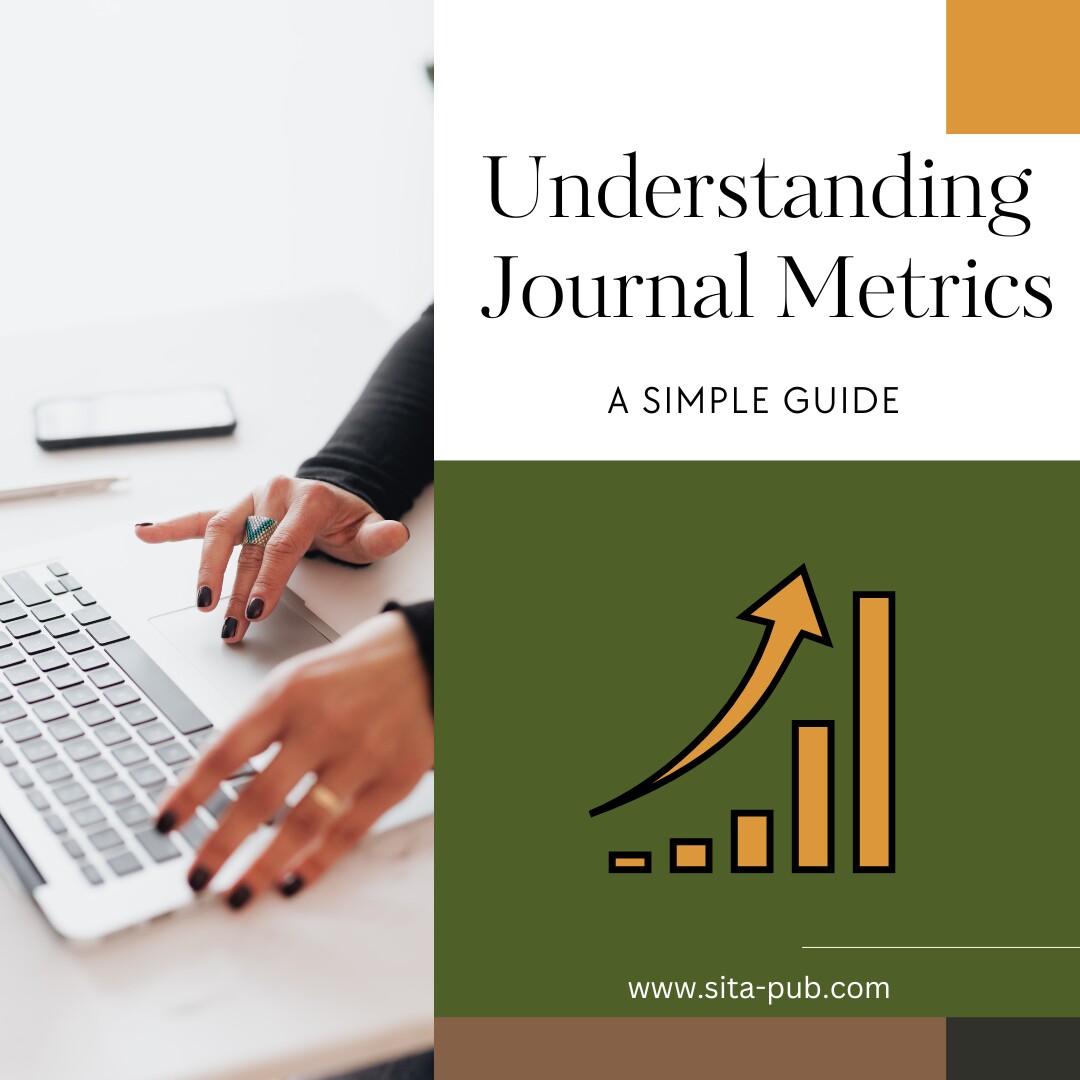Understanding Journal Metrics: A Simple Guide


Journal metrics are important numbers that help us understand the impact and influence of academic journals. These metrics can assist researchers in deciding where to publish their work. Here’s a breakdown of key journal metrics explained in simple terms:

What It Is: Measures how often articles in a journal are cited in other research.
How It’s Calculated: Count citations from the last two years and divide by the number of articles published.
Limitations: Focuses on a short time frame and varies by academic field.
What It Is: Shows both the productivity of a journal and the frequency of citations.
How It Works: A journal has an h-index of 10 if 10 of its articles have at least 10 citations each.
Limitations: May favor older publications.
What It Is: Measures the average citations per document over four years.
How It’s Calculated: Total citations in one year divided by the number of articles published in the last four years.
Limitations: May include non-research documents, affecting the accuracy.
What It Is: Considers the number of citations and the prestige of the citing journals.
How It’s Calculated: Total citations to articles over three years divided by the number of articles published.
Limitations: The calculation can be complex and less transparent.
What It Is: Measures the average influence of articles published in a journal over five years.
How It Works: Based on SJR, adjusted for the number of articles.
Limitations: Doesn’t always capture long-term significance.
What It Is: Shows how quickly articles are cited after publication.
How It’s Calculated: Citations in the current year to articles published that same year divided by the total number of articles.
Limitations: Only reflects immediate citations.
What It Is: Indicates how many years it takes for half of the citations to occur.
How It Works: Based on citation data over time.
Limitations: May not represent ongoing relevance of older articles.
What It Is: Measures the overall influence of a journal based on citations and the prestige of citing journals.
How It Works: Total citations to a journal’s articles divided by total citations to all journals.
Limitations: Complex and may take time to develop a score.
What It Is: Measures a journal's impact while considering the citation potential of its field.
How It’s Calculated: Compares the journal’s citation potential to the field’s average.
Limitations: Not useful for comparing journals across different disciplines.
What It Is: Measures the online attention an article receives, such as social media mentions.
How It Works: Counts mentions across various platforms and provides a comprehensive view.
Limitations: Online attention doesn’t always equate to academic significance.
What It Is: Provides detailed analytics on journal performance, including Impact Factor and other metrics.
Limitations: Often requires a subscription to access.
What It Is: The percentage of submitted articles that a journal accepts for publication.
How It’s Calculated: Number of accepted articles divided by total submissions.
Limitations: Not all journals disclose this information.
What It Is: The average time from submission to publication.
Limitations: Varies widely among different journals.
What It Is: Metrics that show the visibility and influence of journals indexed in the Web of Science database.
Limitations: Only includes journals in this specific collection.
What It Is: Reflects the reputation of researchers and their publications based on engagement within the ResearchGate network.
Limitations: Platform-specific and may vary among researchers.
When deciding where to publish, you can follow these steps:
Know Your Goals: Think about whether you want visibility, prestige, or to reach a specific audience.
Look at Metrics: Check the Impact Factor, h-index, CiteScore, and other relevant metrics to gauge journal reputation.
Field Relevance: Ensure the journal fits your research area and its academic focus.
Readership: Make sure the journal’s audience aligns with your research topic.
Submission Policies: Review the journal’s guidelines and acceptance rates.

By understanding these journal metrics, you can make informed choices about where to publish your research, maximizing its impact and reach within the academic community.
Need help choosing the right journal for your research paper? Contact SITA Academy for detailed journal metrics and recommendations tailored to your work. Our experts will review your paper's abstract and guide you to the most suitable publication options. Take the first step - reach out to SITA Academy today.
If you have any questions, inquiries, or would like to learn more about our services, please don't hesitate to reach out to us. Our dedicated team is ready to assist you.